Film Maker Par Excellence – Bimal Roy
Apni kahani Chhod jaa, kuch to nishani chhod jaa, Kaun jaye is or, tu phir aaye na aaye Mausam beeta jaaye Mausam Beeta jaaye… , The rousing song, set to the tune of a Soviet Red Army March Polyushko Polye orchestrated by Salil Choudhary, seemed to be a perfect metaphor for Bimal Roy’s film making style that used all the typical “commercial mainstream” elements yet made a social commentary about many prevalent conditions of India before and after independence.
Born in Dhaka (in present-day Bangladesh) in 1909, Roy’s sensibilities were honed by his stint in New Theatres, Calcutta which was the pioneer of the talkies in its heydays. A quick look is necessary as New Theatres set many new standards for the films to follow.
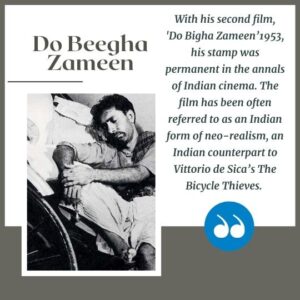
In K.L. Saigal, New Theatres had a singing star who mesmerized the nation with his incredible talent and who is considered to be the “Guru” of many second-generation playback singers like Mukesh, Kishore Kumar, Talat Mehmood who initially sang like him but soon found their own style. The importance of music was surely not lost on Bimal-da, as he was known in the industry. Music had to both make a statement and also forward the story. This was the rule than the exception in most of the “picturized” drama of that era.
With independence came the move to Bombay and this is when Bimal-da came into his own as the complete creator of the film, what the French call as “Auteur” – the author of the film – whose stamp is there in every department, be it writing, script, dialogues, and direction.
His first film in Bombay as director Pehla Aadmi’1950, about a man who joins the INA, didn’t exactly set the box office on fire. With his second film, Do Bigha Zameen’1953, his stamp was permanent in the annals of Indian cinema. The film has been often referred to as an Indian form of neo-realism, an Indian counterpart to Vittorio de Sica’s The Bicycle Thieves. This is far from the reality as there is a mix of use of studio and “outdoor” locations which give credence to the “Neo-Realism” label.
Being born into a Zamindar family, Bimal-da wasn’t surely unaware of the problems of the poor. In fact, in a radio interview in 2002, Hrishikesh Mukherjee said “Bimal-da didn’t hate the poor, he hated poverty. He had nothing but compassion for the poor. Not enough has been written about him”. This gives a clear insight into what ‘Do Bigha Zameen’ was all about – the struggle of the indentured peasant to get back his land, by working in the city and his struggles therein.
In Balraj Sahni, Bimal-da found the perfect committed artist who essayed Shambhu, the peasant who wanted to struggle against the injustices meted out to him. Watching the film today, we don’t see Balraj Sahni but Shambhu the honest man trying to scrape a living while pulling a hand rickshaw in the heartless city of Calcutta. It is here that Salil Choudhury’s music comes into its own. Each and every song conveys Shambhu’s struggle and forwards the story. When the rains promise a good harvest and incoming wealth, the farmers break into “Hariyala saawan dhol bajata aaya…”
Since the landlord has asked Shambhu to cough up the money, Shambhu is leaving his village and traveling onwards to the city. There are some farmers who are singing the rousing song ‘Dharti kahey pukaar ke, beej bichhaa le pyaar ke, Kaun kahey is or, tu phir aaye na aaye, Mausam beeta jaaye Mausam Beeta jaaye, Apni kahani Chhod jaa, kuchh to nishani chhod jaa, Kaun kahey is or…
Shailendra’s rousing chorus points to the origin of the migration of the poor to the city and that way the film is far more prescient than it is generally accepted. Once in, never out – that has been the lives of many migrant workers and this has been pointed out almost 70 years ago in this film and particularly in this song. We can say that this is in hindsight but surely this was not the case when Shailendra, who was as conscious of social issues as Salil-da and Bimal-da, wrote the lyrics.
Once in the city, Shambhu is eking out a living and the tired laborers gather together and mock their conditions while apparently questioning God with “Ajab tori duniya O more Rama…’ (Quiz: Spot a famous comic-star in the group who became famous in the late 50s and 60s)
 Shambhu quietly listens to the men singing about their pitiful condition in the city and then telling God about the strangeness of the world. The words say it all – they have done all the hard work and they get no just rewards. If that looks too “Socialist” or “Communist” today, then let’s not forget that this was a symbol of the then prevalent political ethos of “equality for all once the British have left India”.
Shambhu quietly listens to the men singing about their pitiful condition in the city and then telling God about the strangeness of the world. The words say it all – they have done all the hard work and they get no just rewards. If that looks too “Socialist” or “Communist” today, then let’s not forget that this was a symbol of the then prevalent political ethos of “equality for all once the British have left India”.
The film won various national and international awards and set everyone’s reputation forever. Bimal-da was accepted as a filmmaker who straddled the thin line between “commercial cinema” and “art/ parallel cinema”. This was something that his disciples Hrishikesh Mukherjee, Gulzar, and Basu Bhattacharya distilled in their best films.
‘Parineeta’ was released in the same year 1953 as ‘Do Bigha Zameen’. Based on a short story by Sharat Chandra Chattopadhyay, once again the film examined conditions of debt, zamindari, women’s status in society and won acclaim while also being the fourth biggest box office hit with ‘Do Bigha Zameen’ the third place. (Source: Box Office India)
1954 had two releases both of which were not successes but did make some comments on prevalent conditions. While ‘Biraj Bahu’ was about a righteous poor couple facing the hardships of life in rural India (Bengal), ‘Naukri’ was more contemporary and showed a mirror to India that all was not well in independent India. This ranks as one of the finest performances by Kishore Kumar, as a serious actor, especially when he was already famous (or as some would say infamous) for his comic talent and singing.
The earnest youth thirsting for a job – ANY job – is shown in the song where each unemployed youth shares a dream of getting a job based on his qualification. While some talk of their prowess at sports, hopefully paving the way for a job, the query of “a small job”, told partly comically, is rendered both on and offscreen by Kishore Kumar. Gone is the comic anarchy of his films; this is a youth wanting nothing but the best for his family as he dreams of a good simple life with his family with “Chhota sa ghar hoga baadlon ki chhanv mein…”. The unemployed youth in the hostel sing – or is it lament – their condition with a request for ‘Ek Chhoti si Naukri ka…”
In 1955 came one of the best, probably THE interpretation, of the classic tragedy ‘Devdas’. The word Devdas has become a metaphor for lost love, romantic tragedy, and self-destruction. This was the first film of S D Burman for Bimal-da who had, by and large, worked with Salil Choudhury for all his films to date. It was a meeting of the minds in that the overall sensibility of the Sharat Chandra Chattopadhyay novel was perfectly understood by Burman-da and his overall output in the film showed how much Bimal-da’s vision and Burman-da’s musical vision is in perfect sync.
Each and every song is a gem but perhaps the finest two are when Chandramukhi finally realizes that she too doesn’t want to be the cause of Devdas’s torment as she seeks out Devdas in the by lanes of the infamous areas and finally finds him uncaring, only concerned with his loss.
“Kisko khabar thi” is a lament by a fully drunk Devdas. The below version, with a brief dialogue, shows how much Talat Mehmood was the ghost voice for Dilip Kumar as we can’t distinguish whether Dilip Kumar or Talat is singing
The two women in Devdas’s life cross paths unknowingly and the lyrics leave us with a tantalizing clue about life’s path being about both ‘dukh’ and ‘sukh’. The rural setting, Paro being carried in a palanquin, their brief locking of eyes (Contrast this with both Paro and Chandramukhi dancing together in the ‘modern’ version) and the only Mohammed Rafi number that plays in the background about ‘travelers wanting to reach a destination. In this song, Manzil Ki Chaah Mein…., the two women in Devdas’s life, do not know each other, yet are bound by their common bond – Devdas himself.
Three years later in 1958, Bimal-da perhaps made his most commercially successful film, ‘Madhumati’. With its theme of reincarnation, a worthy star couple, an equally worthy villain (Pran), and a varied soundtrack that had elements of folk and classical music, ‘Madhumati’ was the biggest box office hit of 1956. While all the songs are incredibly well known, perhaps the one song that defines the film is the haunting “Aaja re pardesi…” which is when the hero Anand sees Madhumati for the first time. The words and the picturization give a feeling that Anand is looking at a ghost which soon transpires into a real human by the end of the song.
Trivia: The same (original) song “Aaja Re Pardesi” by Lata Mangeshkar was used by Bimal-da’s disciple Hrishikesh Mukherjee in the final scene of Guddi (1971), with Jaya Bahaduri, lip-syncing the original song.
1957 saw the release of ‘Sujata’ and once again S D Burman delivered a classic soundtrack that was neatly integrated into the film. The film’s theme on the evil of untouchability was well accepted by the audience. The despondent Sujata who has learned of her origins has given up hope and is now clear that she will never lead a normal life. However, in the Brahmin Adheer, she finds a person who doesn’t believe in caste prejudices and when he confesses her feelings for her – over the phone – she silently breaks down. This song probably defines Sujata’s mental turmoil much better than any other song in the film.https://youtu.be/jsaKIKHmz3M
With ‘Parakh’1960, it was back to social satire wherein greedy humans change their behavior on the prospect of earning more money but subject to certain conditions of being charitable and caring for people. While ‘O sajna barkha bahaar aayi’ and ‘Mila hai kisika jhumka’ are very well known, the Baul song style of the song perfectly defines still relevant biting satire of ‘Kya hawa chali ke baba rut badli’
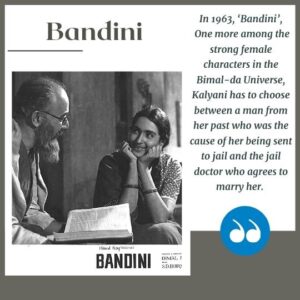 In 1963, came ‘Bandini’, his last film as a director. One more among the strong female characters in the Bimal-da Universe, Kalyani has to choose between a man from her past who was the cause of her being sent to jail and the jail doctor who agrees to marry her. Many a time the past has an impact on the present and this song is perhaps the greatest and finest onscreen representation of a dilemma – should she take the train and go to the kind loving jailor or the boat along with her past? Who will she be bound to? The climactic song shows this final dilemma and has to be seen to be believed. (till 2:51)
In 1963, came ‘Bandini’, his last film as a director. One more among the strong female characters in the Bimal-da Universe, Kalyani has to choose between a man from her past who was the cause of her being sent to jail and the jail doctor who agrees to marry her. Many a time the past has an impact on the present and this song is perhaps the greatest and finest onscreen representation of a dilemma – should she take the train and go to the kind loving jailor or the boat along with her past? Who will she be bound to? The climactic song shows this final dilemma and has to be seen to be believed. (till 2:51)
Increasing health issues resulted in his abandoning film titled ‘Sahara’ in 1965 (which was later made as ‘Chaitali’ by Hrishikesh Mukherjee and released in 1975) and resulted in his passing away in 1966. The wealth of the films and their social comment on conditions in India, some of which haven’t changed even after 70 years of independence, are perhaps best served by the haunting song from ‘Do Bigha Zameen’, Apni kahani Chhod jaa, kuchh to nishani chhod jaa, Kaun jaye is or, tu phir aaye na aaye, Mausam beeta jaaye Mausam Beeta jaaye…
(Please check for more details from author KV Ramesh http://rammesh.co.in/#Book_list)


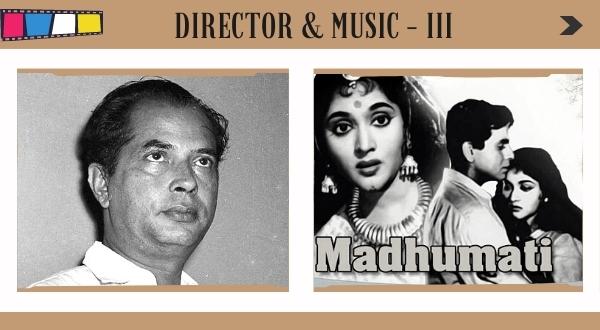
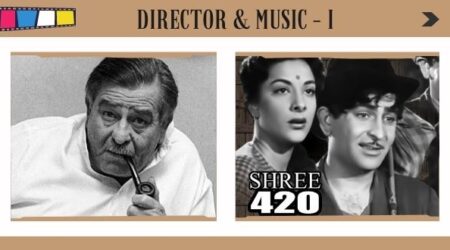
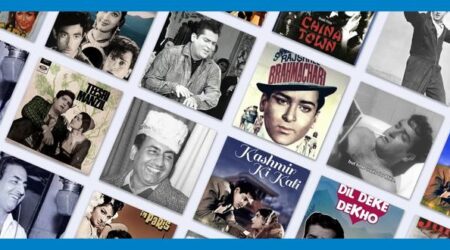



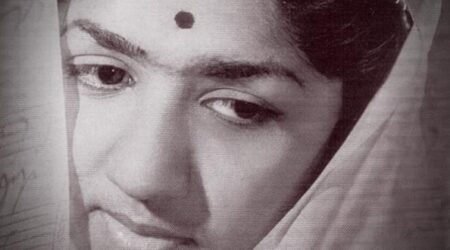
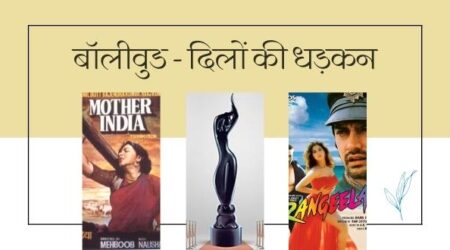

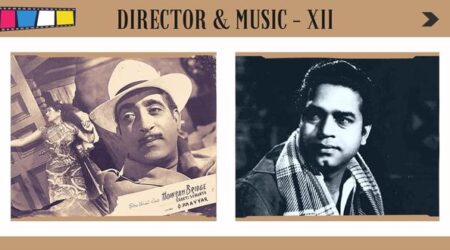
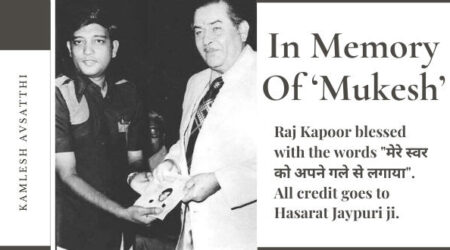

Comments (2)
Waah,
Well written and well researched article.